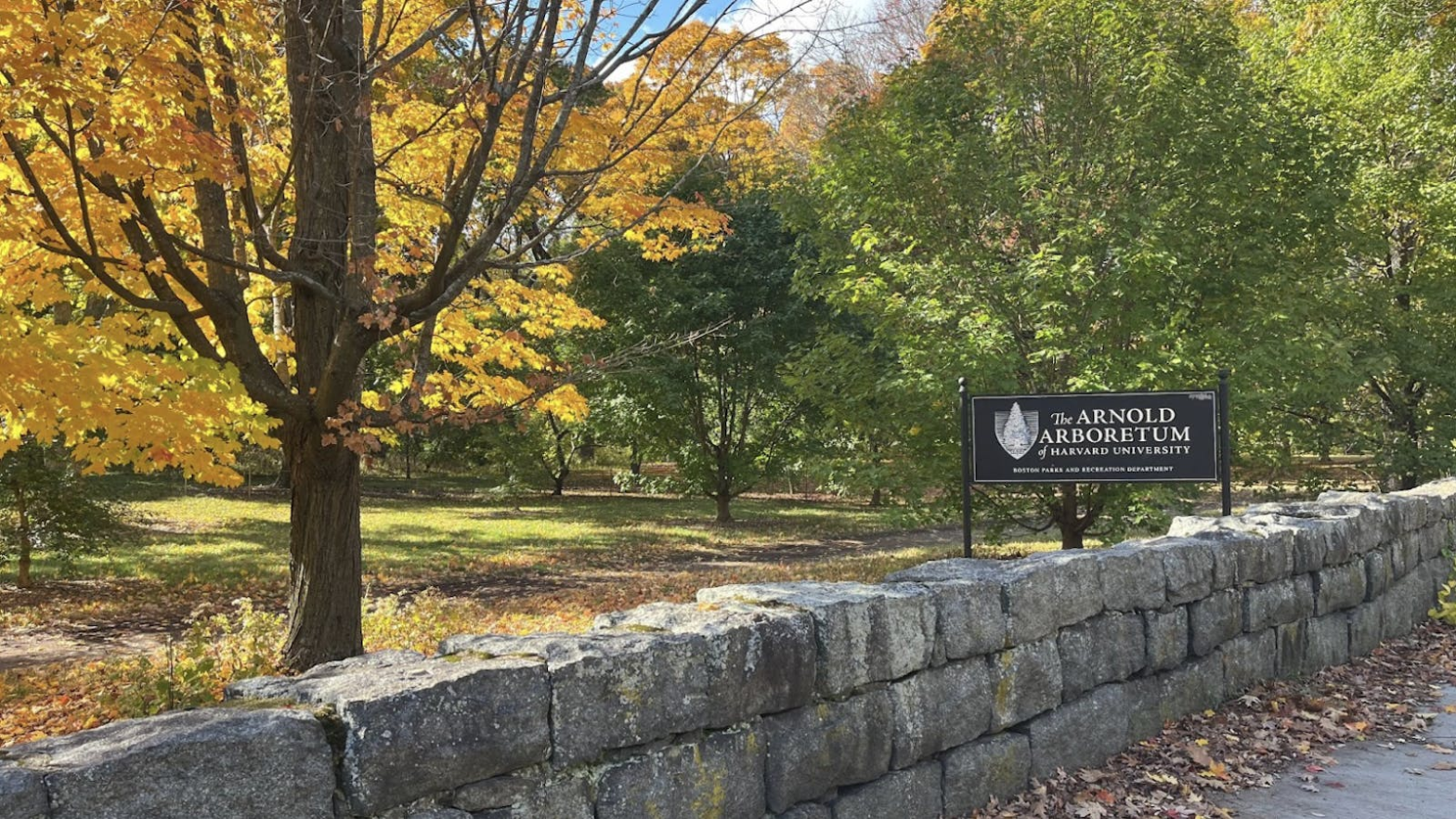The Arnold Arboretum at Harvard University spans 281 acres and houses a collection of more than 16,000 plants. Rodney Eason, director of horticulture and landscape at the Arboretum, can recognize these plants by sight and tell their stories by heart.
Meet Franklinia Alatamaha. Philadelphian William Bartram and his son John discovered and collected the Franklin Tree, named after Benjamin Franklin, along the Altamaha River in 1765. When they returned to the site, every Franklinia was gone. Extinct in the wild, The oldest representatives of the species were recorded by the Arboretum in 1884 and currently live in the Explorers Garden. The Explorers Garden is located on Bussey Hill is the warmest area of the landscape and is where plants are tested for their resilience in Boston's climate.
The Franklinia are an extreme example of ex situ conservation in the arboretum. “One of our tasks as a tree museum is to promote biological diversity.Eason said.[Conservation is] essential for us.”
In addition to preserving plants, the arboretum also preserves the works of past artists. Founded in 1872the arboretum still ffollows Frederick Law Olmsted's original layout, is considered the father of American landscape architecture, ad Charles Sprague Sargent, the arboretum's first director. It was Sargent who began the practice of organizing plants by family, which is still practiced today.
Over time, numerous landscape architects have contributed to the park, including America's first female landscape architect, Beatrix Farrand. FArrand laid out the azalea border in 1946, lies in front of a wet meadow. Before environmental regulation, Sargent wanted to drain the meadow to expand the arboretum, but the landscape refused to change. “It wanted to be a wet area” Eason said. Since then, tThe area became more and more humid – some of the azaleas could no longer grow, so over time they had to change the composition of the azaleas. “We don’t fully understand the hydrology,” Eason said, Although He suspects that the rise in groundwater levels could be caused by sediment deposits.
The azaleas aren't the only collection that's been altered. Each year 300 to 500 plants are removed and added. EAson and his team keep a list of plants they are interested in purchasing and consult with them when a replacement is needed. “The horticultural team is enthusiastic and they’re a great group,” Eason said. To ensure the condition of the current collection, they conduct frequent inspections of the soilS. Eason focuses on “a health and aesthetic standpoint,” while his colleagues look for diseases and pests. With a team of just 20 people, “communication is essential,” Eason said.
Like the Franklinia, most of the plants in the arboretum come from wild collections from the USA, Asia and Europe. The seeds are returned to the arboretum's Dana greenhouses and grown in the nursery until they are ready for transplanting into the landscape.
Adjacent to the Dana greenhouses is the Bonsai and Penjing collection. Open from mid-April to mid-November, The collection includes over 70 trees, Some of them are displayed in a wooden pavilion equipped with a security system. “Just like in a museum.” According to Eason, the bonsai need this protection because they ““can’t bear to have thousands of hands touching the branches.” Jun Imabayashi, a bonsai master trained in Japan, shapes the trees with copper wire. “He’ll move it the way it needs to grow,” Eason said. “It’s an ultimate art form.”
The Bonsai Pavilion overlooks a vast landscape of bright orange sugar maple trees. “It’s just really cool to be in this place where you have that manipulated and then there are the sugar maples,” Eason said.
The contrast between the more manipulated and the less manipulated landscape is again visible from the summit of Bussey Hill. One side offers unobstructed views of the Blue Hills while another offers a view of the Boston skyline, barely visible through the foliage. Although Eason wishes both views could be seen clearly, he does not want to interfere with the growth of the trees. “I know there are some places where people trim trees to provide a view,” Eason said. “Since our trees are essentially works of art in Harvard’s tree museum, we probably don’t want to do that.”
Eason and his team are currently planning a redevelopment of Bussey Hill. Although the The full scope of the project is still uncertainChanges could include Improving accessibility to Explorers Garden And extend to the summit, RRemoving the parking lot at the summit, And Redesign of lawns at Explorers Garden. Matt Girard, landscape architect with Michael Van Valkenburgh and Associates, will work on the project. According to Eason, according to the staff After the “initial groundwork,” including an assessment of the site’s strengths, weaknesses and planting options, they meet with Girard for a charette — a creative brainstorming session. When they remove the asphalt on Bussey Summit, Eason wonders: “What would happen? What are we supposed to do here? I have no idea.”
Uncertainties are opportunities, whether Eason replaces a tree or improve Visitor experience. But for Eason, one thing is always certain: from Katsura leaves smell like cotton candy in the fall on persimmon bark, which looks like alligator skin, “Every tree is unique, and every growth habit is unique.”
